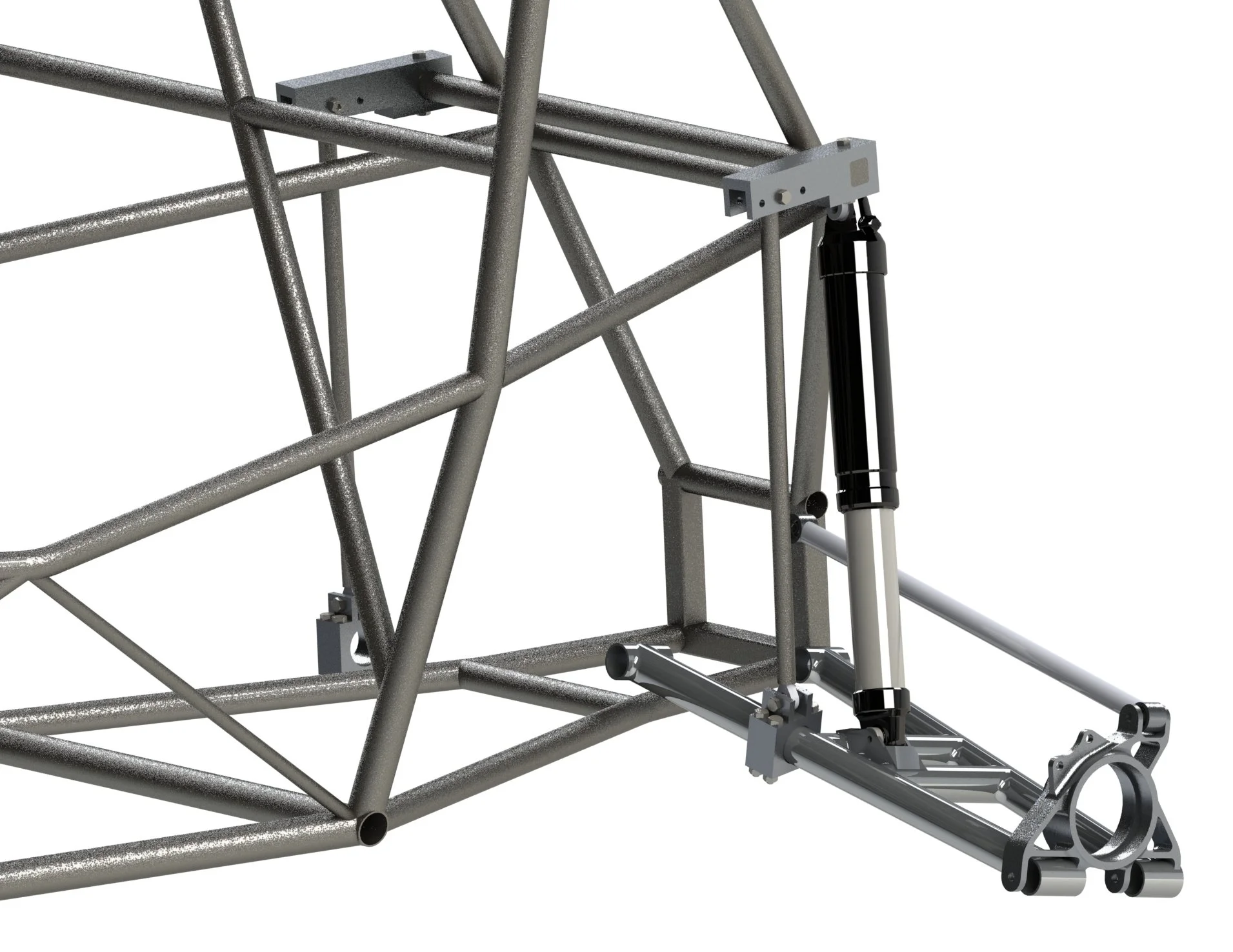
2017
Anti-Roll Bar
Cornell Baja
Scroll ↓
During my first semester on the team, I was given the task to design an Anti-Roll Bar (ARB). Previously, the team relied on a cutting brake design for the maneuverability event. However, this system was plagued by issues with the hydraulic system, and lighter, simpler, and cheaper options like an ARB were out there.
The first step of the process was integrating the components onto an existing test vehicle. The solution I landed on was to package the ARB above the suspension links, constrained by tabs welded onto the frame. This would give ample space for long moment arms on the bar, and good protection from any rocks that other low to the ground locations would encounter. Then, the ARB would then use long pushrods and clamps to attach to the lower H-Arms, which could withstand high loads. Welding tabs onto the existing links was considered, however this would have affected the heat treatment of the existing parts.
From here, the tube and pushrods needed to be sized. Since it was unclear how much oversteer we wanted to add to the vehicle, I used my judgement from previous designs to drive the stiffness of the ARB and added some adjustability. Three pushrod point options could be quickly switched between to change the amount of moment on the bar. From here, I created an FEA model to determine the torsional stress on the main bar, compared the results with torsional stress equations, and conducted buckling equations on the pushrods.
Once the project was complete, we tested the design and compared it against other oversteer solutions like limit straps. We assessed both options by lap time and driver feel. The limit straps edged out the ARB by about one second consistently and were cheaper, lighter, and more adjustable. While my design was not selected, it proved to be a competitive option and enabled me to use many of my engineering fundamentals.






